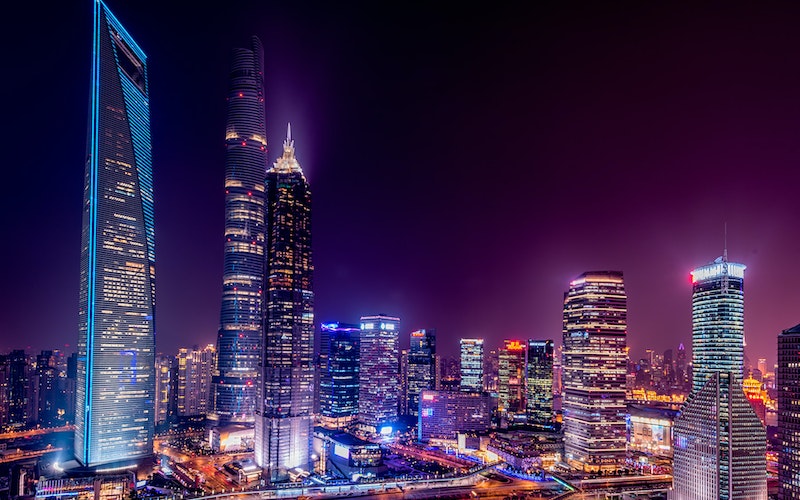It’s a Monday morning, and Murphy’s Law is in full effect. The alarm was set an hour later than intended and the spouse, child and dog have penetrated your inner calm like an invading army breaching castle walls. All before 8 am. You approach the heavy oak front door and swing it wide with reckless abandon, hoping to gain precious seconds back — a ploy that increases the likelihood of making it to the office on time by 0.1%.
But something miraculous happens when the threshold to the world is crossed: the spring air is crisp and clean. Birds sing and chirp and flutter from one hibiscus tree to the next. The sound of traffic is characterized by a gentle hum as vehicles come your way and now speed away in a most organized fashion. Cyclists almost outnumber cars as the morning rush reaches its daily crescendo.
You exhale and begin your seven-block trek to work. This idyllic scene may seem far-fetched or unattainable, but the transformation of urban areas to smart, regenerative, sustainable cities has already begun. Everything is smart nowadays. It’s the new paradigm for our phones, watches and even our homes, and now, our cities are following suit.
How Do We Turn Established Cities Into Something Smarter
The first step toward creating a smart city is utilizing the digital intelligence we hold in our hands — sometimes obsessively — throughout the day.
Smartphones have the power to direct real-time data to a technology base. Dedicated applications can then analyze the information to provide alerts on crime, traffic and air quality. Technologies used for industrial applications can also be analyzed and added to the growing database. AI analytics are utilized in almost every piece of machinery as the technology becomes less expensive and more widely available. For example, recycling plants are beginning to use AI to understand how to efficiently dispose of and repurpose waste.
According to a report from McGinsky Global Institute (MGI), smart solutions can improve multiple aspects of quality of life in cities including cost of living, jobs, connectedness, environment and health and safety.
Technologies such as real-time crime mapping allow cities to deploy scarce resources to the most needed areas. Deploying a range of applications to their maximum effect could potentially reduce fatalities from homicide, road traffic and fires by 8-10%. In a high-crime city with a population of five million, this could mean saving up to 300 lives each year. In addition, the intangible benefit of increased peace of mind will manifest in increased productivity and a greater sense of community.
Targeting the Traffic Crisis
If you live and work in a big city, you know the frustration of the daily commute. One of the goals of smart cities is to reduce traffic by creating a more intelligent traffic system.
Smart-mobility applications have the potential to cut commuting times by 15-20% on average, according to MGI. Digital signage and mobile apps can deliver real-time information about delays, allowing commuters to adjust their routes while in transit. Installing IoT sensors on existing infrastructure will alert crews to problems before they result in major delays. Intelligent syncing of traffic signals will significantly reduce average commute times for people in cities where cars or buses are the primary methods of transportation.
Real-time navigation is already helping drivers avoid on-route accidents and smart parking apps are being implemented throughout the U.S. right now. Reduced commute time and a more efficient traffic system will also reduce the carbon footprint of big cities. It may not seem like a consequential change, but scaled to every major city, these measures could be a critical factor in turning the tide in the ongoing climate battle.
Smarter Cities = A Cleaner World
Urbanization, industrialization and rising consumption associated with rapid population growth are some of the main culprits in the degradation of the environment, pollution, food chain collapse and climate change.
Advanced technology like AI and the IoT have made our lives more convenient and even facilitated the path to longer, healthier lives. By making cities smarter, we can turn the crux of the problem into the epicenter of the solution.
Building-automation systems, dynamic electricity pricing and mobility applications could combine to cut emissions by 10 to 15%, according to MGI. It is a little-known fact that water pipe leaks are one of the biggest sources of water loss. Sensors and analytics can reduce those losses by 25%.
The key to an effective smart city is the sharing-of real-time data. The more information available for analysis, the more the public can be informed on pollutants and the impact of their lifestyles. To fuse two maxims: knowledge is power, great knowledge is great power, and with great power comes great responsibility. Ultimately, well-informed citizens are more likely to take responsibility for the world around them.
Europe Initiatives
While U.S. cities are beginning to implement smart city policies, European cities are at the vanguard of the sustainable city movement. In 2021, 75% of Europe’s population was localized in urban areas, compared to 56% of the population in the U.S., according to Statista.
Because of the high population density in cities and Europe’s dedication to sustainable living, EU-funded smart city and community lighthouse projects have proliferated over the last decade. Stockholm, Barcelona and Cologne were chosen as “lighthouse cities” to pilot the GrowSmarter project — an initiative created to provide sustainable solutions to urban areas throughout Europe.
The project focused on low-energy districts, integrated infrastructures and sustainable urban mobility, and included a deep retrofitting approach for buildings from the 60s and 70s. It also introduced vehicles fueled by alternative sources and smart traffic management.
“Around one-third of Europeans live in buildings from the 1960s and 70s, which are all in need of renovation,” said project coordinator Gustaf Landahl. “Under GrowSmarter, buildings from the 60s have been refurbished to meet newly built energy standards. If we see this potential, we can start putting in solutions to save energy and give people better instruments to control their own use of energy.”
Between 2015 and 2019, GrowSmarter received €25 million ($26.4 million) in funding from the European Union’s Horizon 2020 research and innovation program — the largest EU research program in history with nearly €80 billion of funding. The appropriation shows the level of dedication Europe has to sustainability.
According to GrowSmarter’s final report, the participating cities averaged 30-70% in CO2 savings, deployed 72 sustainable vehicles, engaged 15,000 citizens and improved overall quality of life. All aspects of our lives are getting smarter, from the way we eat to the medicine we take and, of course, the tools we use.
Now is the time to utilize these tools on the grandest scale — our planet. Cities are inexorably tied to the health of the Earth, as much as we may not want to admit it. But we must embrace this reality into our collective schema in order to facilitate a better way of living. Fortunately, we have the technology, data-backed knowledge and momentum to make the smart city a fixture of counties, states and countries around the globe.










